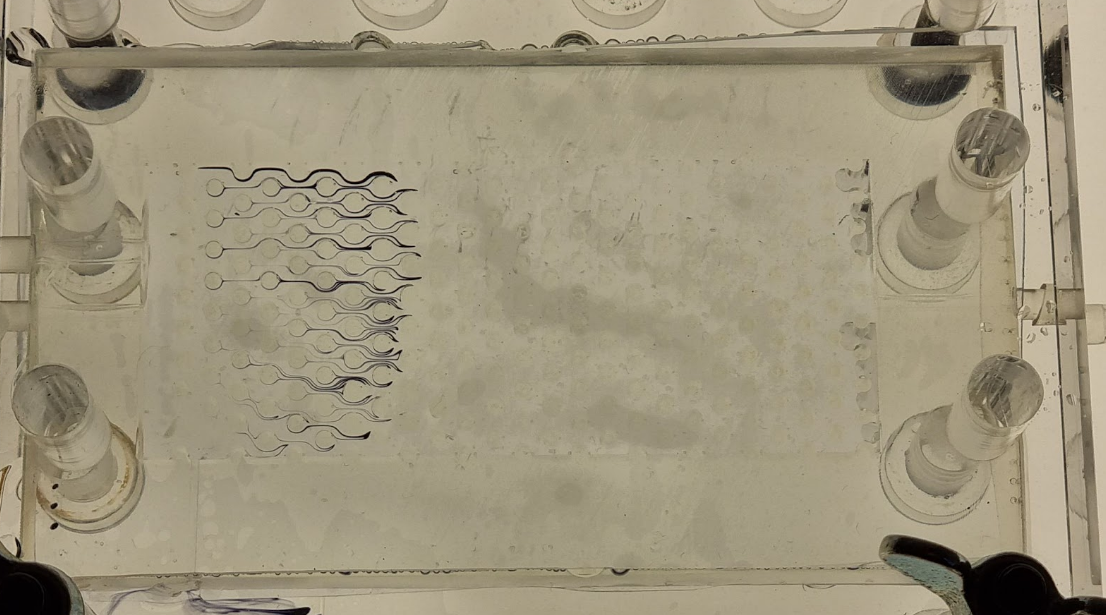Motivation:
Solute mixing is a key process in a range of industrial and natural systems as it brings reactants into contact. When you add a blob of dye to a flowing viscous fluid, mixing takes place through a series of folding and stretching events: think of how a baker works a dough. The flow stretches the blob to an ever thinner and longer line which eventually becomes so thin that diffusion takes over and the two constituents become indistinguishable.
In our lab, we image how a blob of dye is deformed in a time-dependent fluid flow through a 3D-printed porous medium. The rate at which the deformation occurs reveals fundamental insights into the physics of mixing, enabling better understanding and potentially more environmentally-friendly exploitation of a host of systems from chemical engineering to groundwater systems.
Challenge:
The task of tracking the shape of elongated dye is fairly easy to do by hand, but it is terribly time-consuming. On the other hand, it is hard to formulate a robust “deterministic” computer algorithm for this problem. However, for these types of problems, the machine learning revolution of the past decade has come to the rescue. Such approaches are expected to be highly effective; however, there is currently no such method available for the problem at hand.
In this project, the student will be expected to develop a robust and efficient line-tracking tool based on machine learning. Students will have the opportunity to use convolutional neural networks, u-nets, and recurrent neural networks. They will use Python libraries such as scikit-image and PyTorch. Both supervised and unsupervised methods will be used. We will use both real experimental data and synthetically generated data as training data.
Output:
The output of a successful project will be a computational method which will benefit an international community of researchers within the interdisciplinary field of mixing (physics, fluid dynamicists, hydrologists).
The student will be supervised by an interdisciplinary team of scientists and work closely with experts on mixing experiments, mixing simulations and machine learning.
Resources:
The student will have access to PoreLab’s local computing clusters and dedicated resources for image analysis, as well as national HPC resources.
